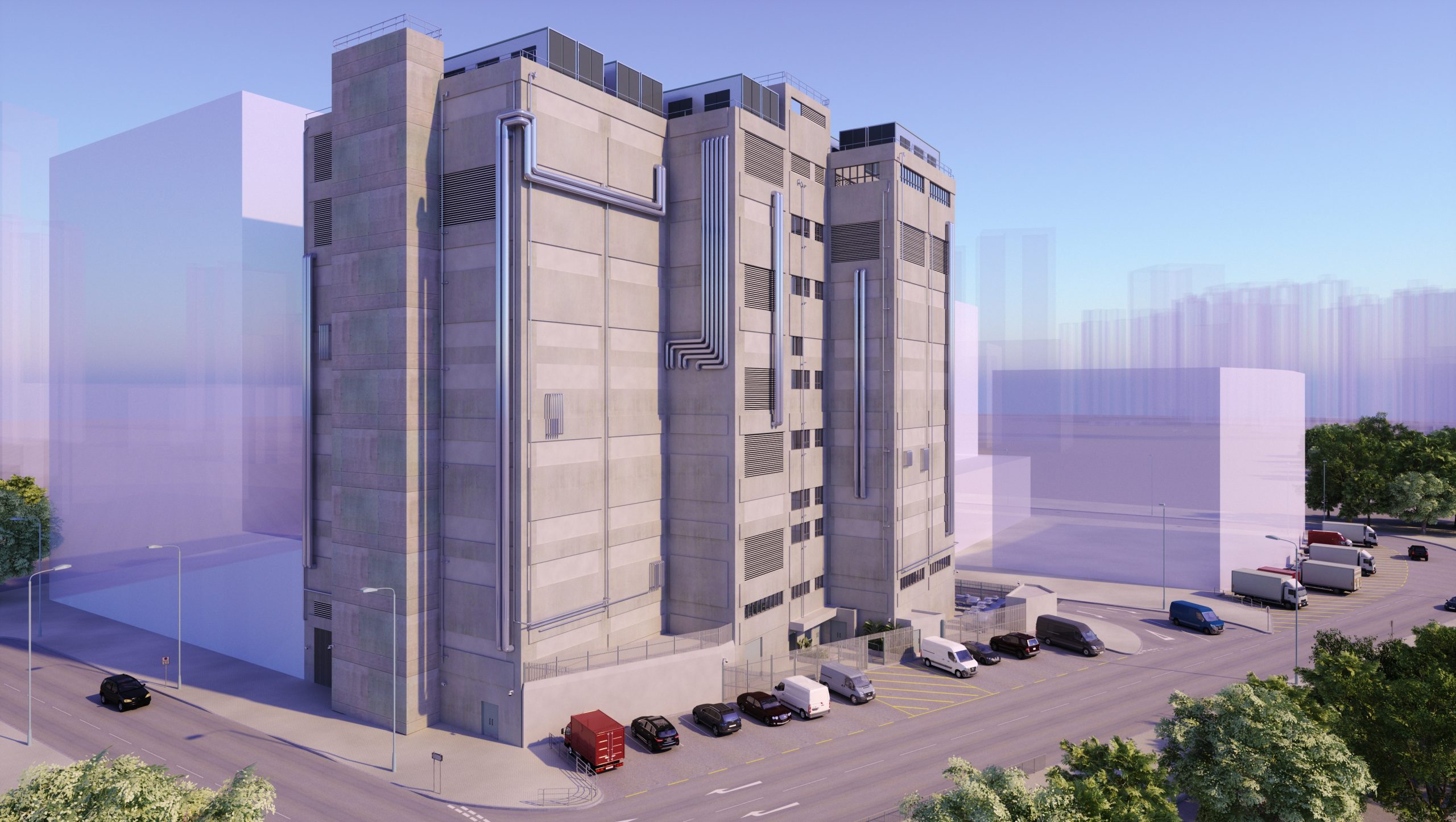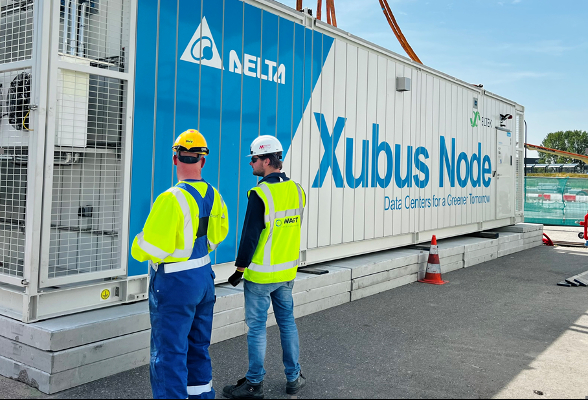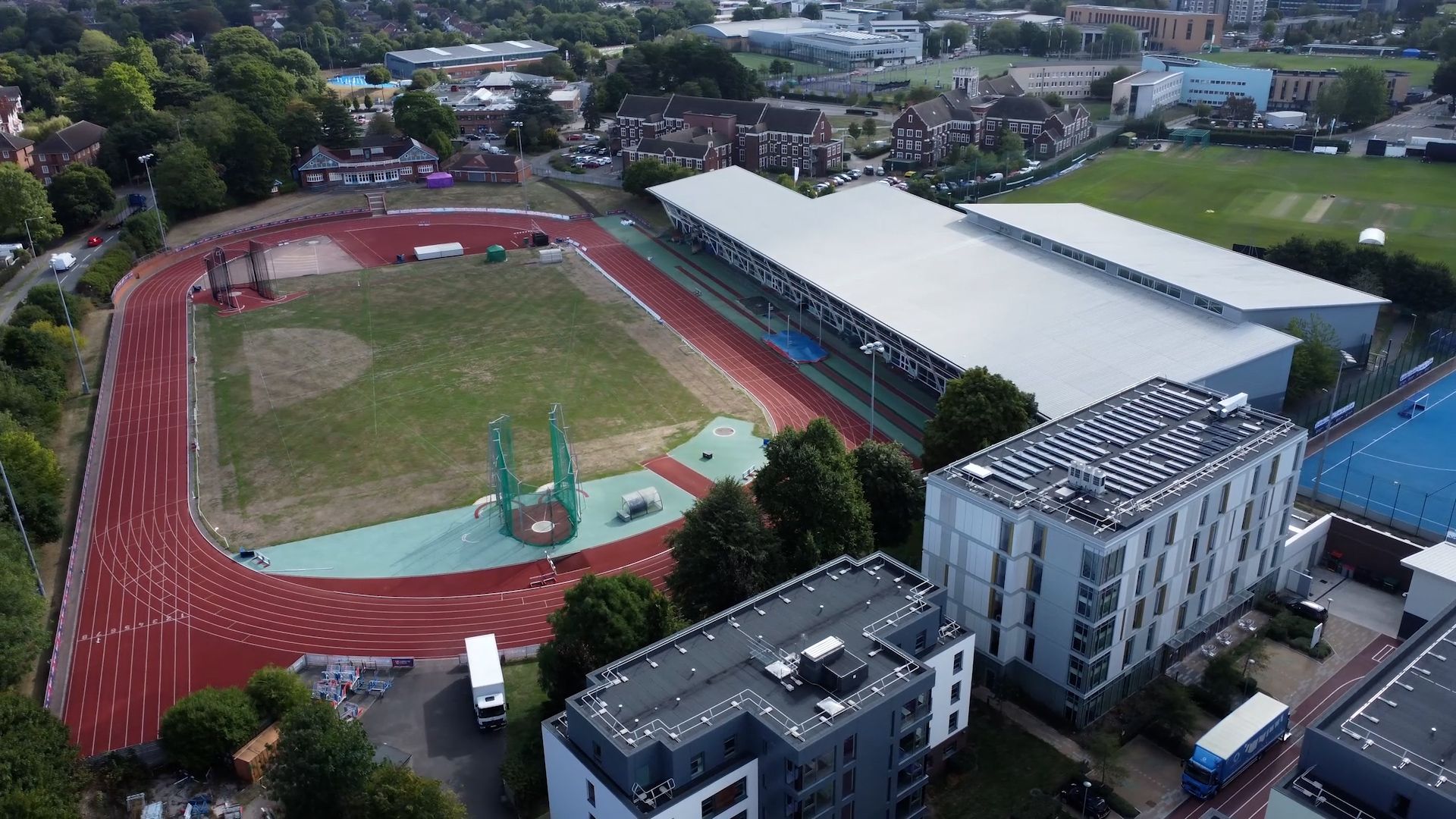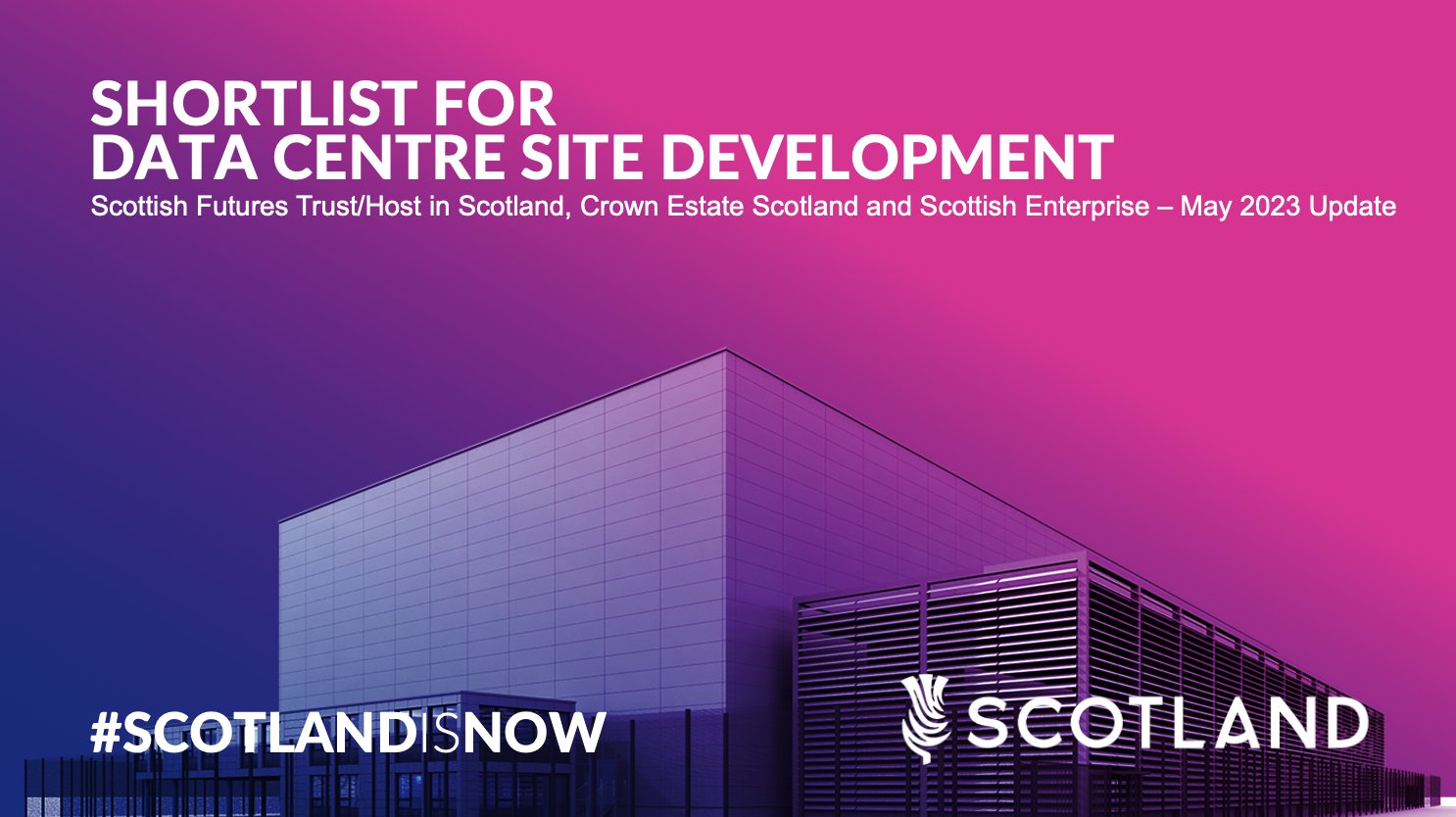Infrastructure Management for Modern Data Centres
Data Centre Build News & Insights
Data Centres
Infrastructure Management for Modern Data Centres
Renewables and Energy: Infrastructure Builds Driving Sustainable Power
Sustainable Infrastructure: Building Resilient, Low-Carbon Projects
AirTrunk announces new data centre in Hong Kong
AirTrunk has announced plans to develop its second data centre in Hong Kong, supporting the demand for critical digital infrastructure in the region.
The company's HKG2 data centre will be scalable to over 15MW and strategically located in a new, major cloud availability zone in East New Territories. Initial capacity is expected to be delivered to the anchor tenant in mid-2024.
HKG2 complements HKG1, which opened in late 2020 in the West New Territories and provides location diversity for the company’s large technology customers. The addition takes its capacity to more than 35MW in Hong Kong.
The facility will become the 10th data centre in its APJ platform that also includes data centres in Australia, Japan, Singapore and Malaysia. Collectively, the platform will offer almost 1.38GW across the region.
AirTrunk's Deputy CEO, Michael Juniper, says, “As a key international business hub, Hong Kong has ambitions to accelerate the development of a digital economy. Combined with the rapid rise of artificial intelligence (AI), there is a huge demand for cloud services and the supporting critical digital infrastructure. HKG2 will play an important role in responding to this demand.”
The data centre will be a retrofit of an existing building and designed to meet the stringent security requirements of global technology customers such as PCI DSS, ISO27001, SOC2 Type 2. Close to key data centres, it will enable international connectivity with direct and low latency access to Greater China and neighbouring North East Asian countries.
AirTrunk's Head of Hong Kong, KC Li, says, “The development of HKG2 will bring significant benefits to the Hong Kong economy, including the creation of new jobs, enablement of public cloud, sustainable innovation, as well as community contributions.”
HKG2 will be designed to an industry low power usage effectiveness of 1.25 and as part of the company’s broader emissions commitment, deliver net zero emissions by 2030, as well as renewable sourcing options.
Isha Jain - 27 June 2023
Data Centre Operations: Optimising Infrastructure for Performance and Reliability
Data Centres
Infrastructure Management for Modern Data Centres
News
News in Cloud Computing & Data Storage
Vertiv announces the opening of head office in South Africa
Vertiv has announced the official opening of its African head office and a customer experience centre, based in Johannesburg, South Africa.
According to Wojtek Piorko, Managing Director, Vertiv Africa, the formal opening of the South African premises forms an important part of the company’s ‘Africa for Africa’ initiative, and underscores the organisation’s investment in the region.
“Vertiv is placing a strong business focus on Africa, as well as expanding our local network of authorised partners and service providers. Our ‘Africa for Africa’ project also emphasises the importance of meeting our local clients’ needs, of which the opening of the African head office and local customer experience centre play a key role,” explains Wojtek.
The Johannesburg Customer Experience Centre provides customers with the opportunity to engage with Vertiv’s diverse range of critical infrastructure solutions for applications from the edge of the network to the cloud. These include:
Vertiv SmartCabinet: a complete cabinet solution for a multitude of environments, providing intelligent and integrated infrastructure for any type of IT.
Vertiv Liebert EXS: compact and flexible three-phase uninterruptible power supply (UPS) with high-efficiency operation.
Vertiv Liebert EXM2: highly reliable monolithic UPS designed to provide industry-leading performance and efficiency up to 98.8%, for mid-size critical applications.
In addition to the products displayed at the centre, it offers the experience of its large-scale modular data centres, power and thermal management solutions through virtual reality (VR) to customers.
Wojtek clarifies, “Using our VR offering, the Vertiv Virtual Showroom, clients can embark on a unique virtual trip to experience Vertiv's capabilities, giving both novices and seasoned experts of Vertiv products a way to fully understand the entire layout of the critical digital infrastructure.”
Users wear a headset and use hand controllers to navigate the VR environment, interact with equipment, and watch animations that demonstrate a product’s value and key features. They can observe the spatial placement of its rack and row solutions, as though they were actually on site. They are also able to customise a Vertiv VR rack by placing servers, power, thermal, and storage devices into the unit.
“This experience gives decision-makers a deeper understanding of the entire infrastructure at work,” Wojtek adds. “In addition, our new centre will provide presales, sales, and product training, as well as full service certification courses for Vertiv’s authorised service partner network.”
Isha Jain - 23 June 2023
Data
Data Centre Operations: Optimising Infrastructure for Performance and Reliability
Data Centres
Infrastructure Management for Modern Data Centres
News in Cloud Computing & Data Storage
HPE announces extension of HPE GreenLake private cloud portfolio
Hewlett Packard Enterprise has announced partnership with Equinix to extend the HPE GreenLake private cloud portfolio at Equinix International Business Exchange (IBX) data centres. It will pre-provision HPE GreenLake for Private Cloud Enterprise and Private Cloud Business Edition at Equinix data centres around the world, giving customers access to a range of private cloud offerings, for greater speed, agility, flexibility, and choice in their hybrid cloud strategy. HPE GreenLake for Private Cloud Enterprise is API-enabled and is an automated, flexible, scalable, and enterprise-grade private cloud with a simple modern experience. It has been designed with modular infrastructure and software, and supports the deployment of bare metal, virtual machines, and container workloads in a self-service mode. With simple rate-card pricing that delivers a pay-as-you-go consumption model, it offers six workload-optimised instances for general purpose, compute, memory and storage.HPE also expanded its private cloud portfolio with the addition of Private Cloud Business Edition. It allows customers to spin up virtual machines (VMs) across hybrid clouds on demand and self-manage their private cloud from VMs to infrastructure with AIOps-driven simplicity. With an intuitive cloud operational experience for management and seamless integration for data protection, customers can store, manage and protect data across on-premises, edge and public cloud while providing data availability and efficiency. It provides flexibility with self-service agility, as well as the option to pay up-front or pay-as-you-go.
Both editions will be pre-provisioned and available on a rolling basis at Equinix IBX data centres in metro areas such as Frankfurt, London, Silicon Valley, Singapore, Sydney, Toronto, and Washington DC. It aims to provide customers with a wide range of workload management and payment options to cover a broad spectrum of their private cloud needs.
“Increasingly, global organisations are turning to digital infrastructure providers to help transform IT investments by distributing private cloud infrastructure at the edge, close to clouds, users, and applications, to enhance enterprise network capabilities that can enable rapid scaling and security, minimise latency and ensure availability of applications,” says David Tapper, Program Vice President at IDC. “By deepening their partnership, HPE and Equinix can assist customers in their hybrid cloud strategy by providing managed cloud services that provision standardised private clouds and simplify integration with public cloud providers, add capacity on an as-needed basis, and enable shorter time commitments. Together, this should help organisations achieve critical objectives such as improved productivity, lower costs and enhanced ROI.”
Isha Jain - 22 June 2023
Data Centres
Infrastructure Management for Modern Data Centres
DF&I announces DataBank as its new industry partner
Dark Fiber and Infrastructure, LLC (DF&I) has announced that DataBank has brought its Ashburn campus on-net to its Express Connect dark fibre network. The infrastructure provides dedicated access to and between major data centres, and peering points in and around the Northern Virginia and Maryland marketplaces on the region’s dark fibre and conduit system.
The DF&I Express Connect network offers the greatest physical route diversity from Northern Virginia to Baltimore, and the most conduit capacity in the region. Over 40,000 fibre strands are available between Maryland and Virginia on its infrastructure, and more than 70,000 fibre strands are available within Virginia, all 100% underground. With its most recent route completed early last year, the network boasts plenty of advantages.
“We are pleased to have DataBank on board with DF&I’s Express Connect network,” says John Schmitt, DF&I’s Founder and Chief Revenue Officer. “We take pride in offering a high capacity, low latency network in one of the most critically important data corridors in the world, and now it can benefit even more businesses thanks to our new partner, DataBank. It’s always a great day when we can expand the network to accommodate even more interconnection in such a vital communication hub like Ashburn.”
The system now connects the campus, which consists of two facilities with a combined 300,00ft² of raised floor space and 50MW of critical IT load across 13ac. Its location in the heart of the Data Centre Alley makes it ideal for enterprise, web-scale SaaS, or hyperscale cloud workloads looking for interconnection and expansion.
“Through DF&I’s vital network infrastructure, we’re now able to give our clients even more reason to deploy here,” says Thomas Cannady, Vice President, DataBank. "We’re excited to join the Express Connect network to strengthen everyone’s access to such powerful dark fibre pathways in the region.”
Isha Jain - 22 June 2023
Data
Data Centre Operations: Optimising Infrastructure for Performance and Reliability
Data Centre Security: Protecting Infrastructure from Physical and Cyber Threats
Data Centres
How the Internet of Things Is Shaping Data Centre Operations
Infrastructure Management for Modern Data Centres
Delta delivers Xubus Node as solution for data centre deployment
For many data centre managers, maintaining storage capacity for data is a continuously moving target. A fine line exists between investment in additional capacity, and leveraging and upgrading existing installations.
Data centres can cost anything from tens of millions of dollars upwards, with some of the industry’s behemoths reportedly having spent over a billion dollars on such infrastructure. And readiness to invest doesn’t turn into capacity quickly. Factoring in construction, electrical and plumbing work, plus installation of the hardware and commissioning, it can be anywhere between 15 and 30 months before a data centre is operable.
Many choose to outsource their data operations to a market that is projected to see good annual growth over the remainder of this decade. But colocation data centres, despite their efficiency through shared resources, aren’t for everyone, especially for those handling sensitive data. Another challenge is the growing demand in the Internet of Things (IoT) and industry 4.0 markets for providing sub-millisecond latency support at the edge, along with 5G, big data, and artificial intelligence applications.
Going modular with data centres
Tackling these issues head-on are modular data centres (MDC). Customisable in size and capacity, they can provide a stopgap solution on-site as a new data centre is being built or can operate as a permanent solution in locations where setting up long-term infrastructure is restricted. Installation on-site enables the MDC to be connected securely to the existing IT system while leveraging existing physical security.
The Delta Xubus Node is fully designed and optimised, deliverable in five standard solutions from 18-90kW IT load with optional auxiliary systems. The system is built into a customised container module (5635 – 13380 × 3300 × 3200mm) that is designed to be transported, installed, and operated on a client’s site. IT load per rack ranges from 6kW-8.18kW and comes with a battery backup time of five minutes.
Depending on the topology, the UPS is implemented using Delta’s DPH Series in an N+1 or 2N approach. Each rack is fitted with a metered power distribution unit (rPDU) or two for a Tier 3 implementation. At Tier 3, the MDC can be serviced anytime without shutting down any system components. In addition, an integrated automatic transfer switch allows a simple installation and use of external diesel generators.
In-row cooling is implemented with N+1 redundancy and the Tier 3 topology uses cooling units with Automatic Transfer Switching (ATS). This allows operation of the MDC over the -15°C to +48°C range. The cooling units have an internal monitoring system, which continuously control both temperature and humidity.
It detects various types of critical events, for example, congested filters, and triggers an alarm if the parameters reach critical values.
A selection of optional components is also available to increase safety, security, and reliability. An access control system and CCTV ensure only authorised staff can access the data centre, while the situation inside the unit is always visible. Aspirating smoke detectors and fibre cable trays are further options, as well as additional hardware configuration. The Data Centre Infrasuite Manager (DCIM) software can be used to monitor the MDC, providing an overview of environmental parameters, the access system, power, and status of the fire suppression equipment.
Thanks to its robust steel construction and mineral wool panels, coupled with a refractory cable entry, fire resistance of 60min (EI) in both directions is achieved.
Transportation, installation and support with Zwart
Delta has successfully deployed the Xubus Node MDC with the support from partner, Zwart Techniek. It supports the transportation, installation, commissioning, and service of Europe’s first Xubus Node, which is also the first containerised data centre built and sold in Europe. Meeting the customer’s financial requirements with a new leasing model, this 70kVA model was delivered to a client based in the Netherlands. Selected to provide data centre support while a permanent data centre is under-construction, the unit was configured and installed in less than nine months, and will provide at least 24 months of service.
Isha Jain - 22 June 2023
Artificial Intelligence in Data Centre Operations
Data Centre Operations: Optimising Infrastructure for Performance and Reliability
Infrastructure Management for Modern Data Centres
Insights into Data Centre Investment & Market Growth
Sustainable Infrastructure: Building Resilient, Low-Carbon Projects
STT GDC and Firmus to build sustainable AI factories
ST Telemedia Global Data Centres (STT GDC) has announced a significant investment into a global venture with Firmus Technologies.
The venture is to be based in Singapore and will see the launch of a GPU-centric Infrastructure as a Service (IaaS) offering focused on deep learning AI and visual computing workloads, to be known as Sustainable Metal Cloud (SMC).
SMC will deliver bare-metal-service access to high-performance AI clusters, which include some of the world’s most advanced workload accelerators including GPUs and high-speed networking from NVIDIA for energy-efficient computing.
It will leverage Firmus’ proprietary, scaled, immersion-cooled platform, the HyperCube, to deliver sustainable AI factories that are all at once sustainable, scalable, high-performance and cost-effective.
Within the HyperCube, Firmus will operate a fleet of high-performance servers provided by OEM partners including Supermicro. It unlocks access to world-class AI tools and hardware in a highly available way.
The SMC is being launched in Singapore, India and Australia in 2023, with the Singapore AZ (SIN01) expected to be live in H2 2023.
The combination of Firmus’ platform, paired with STT GDC’s highly efficient data centre infrastructure, will result in AI workloads running with a lower PUE, lower CO2 emissions and higher petaflops per watt.
“The compound growth in forecasted energy consumption is an existential threat to the data centre sector. Data centre operators and their customers must be prepared to embrace and support new cooling solutions and expand the services they offer beyond traditional air-cooled colocation if they are to host AI GPU platforms in a sustainable manner. The evolution of the data centre into AI factories of the future will fundamentally change the way that all infrastructure operators are thinking about the design and operation of their facilities. STT GDC’s foresight and long-term vision made them the ideal global partner for Firmus’ highly developed solution,” says Ted.
“The future of data centres will rely on the ability to provide both exceptional performance and highly sustainable services at scale. From our beginnings in Singapore almost 10 years ago, we now have scaled the business to cover 10 geographies. We are immensely pleased to enhance our core co-location offering to include the latest GPU-based bare-metal services, empowering our customers with access to the next generation of high-performance computing which will be so critical in the AI revolution. These high-performance services are a key component of the critical infrastructure needed to support the plethora of AI use cases that will be critical to business, governments and society in years to come,” says Bruno Lopez, President and Group Chief Executive, ST Telemedia Global Data Centres.
Isha Jain - 22 June 2023
Cooling
Data Centre Build News & Insights
Data Centre Projects: Infrastructure Builds, Innovations & Updates
Data Centres
Exploring Modern Data Centre Design
Infrastructure Management for Modern Data Centres
Scalable Network Attached Solutions for Modern Infrastructure
Schneider Electric delivers data centre project for Loughborough University
Schneider Electric has delivered a new data centre modernisation project for Loughborough University, in collaboration with its elite partner, on365.
The project saw Schneider Electric and on365 modernise the university’s IT infrastructure with new energy efficient technologies, including an EcoStruxure Row Data Center, InRow Cooling solution, Galaxy VS UPS and EcoStruxure IT software, enabling the university to harness the power of resilient IT infrastructure, data analytics and digital services to support new breakthroughs in sporting research.
As Loughborough University is known for its sports-related subjects and is home to world-class sporting facilities, IT is fundamental to its operations, from its high-performance computing (HPC) servers which support analytical research projects, to a highly virtualised data centre environment that provides critical applications including finance, administration and security.
To overcome a series of data centre challenges, including requirements for a complete redesign, modernisation of legacy cooling systems, improved cooling efficiencies, and greater visibility of its distributed IT assets, the university undertook the project at its Haslegrave and Holywell Park data centres.
Delivered in two phases, the project firstly saw on365 modernise the Haslegrave facility by replacing an outdated raised floor and deploying an EcoStruxure Row Data Center solution. The deployment of this significantly improved the overall structure, enabling an efficient data centre design.
During the upgrade, it also brought other parts of the infrastructure under the IT department’s control, using new InRow DX units to deliver improved cooling reliability, and provide it with greater ability to cope with unplanned weather such as heat waves, which had adversely affected its IT and cooling operations in the past.
Use of this solution also created a new space for future IT expansions and extended a ‘no single points of failure’ design throughout the facility. This made the environment more suitable for a new generation of compact and powerful servers, and the solution was replicated at Holywell Park thereafter. Further improvements in resilience and efficiency were also achieved by Schneider Electric’s Galaxy VS UPS with lithium-ion batteries.
“At the foundational level of everything which is data-driven at the university, the Haslegrave and Holywell data centres are the power behind a host of advancements in sports science, and our transition towards a more sustainable operation,” says Mark Newall, IT Specialist at the University of Loughborough. “Working with Schneider Electric and on365 has enabled our data centre to become more efficient, effective and resilient.”
The university has also upgraded the software used to manage and control its infrastructure. It has deployed the company’s EcoStruxure IT platform, providing it with enhanced visibility and data-driven insights that help identify and mitigate potential faults before they become critical.
This, in conjunction with a new three-year Schneider Electric services agreement delivered via on365, has given the university 24x7 access to maintenance support. The university also utilises a large distributed edge network environment, which has in excess of 60 APC Smart-UPS protecting it. As part of its services agreement, all critical power systems are monitored and maintained via EcoStruxure IT, providing real-time visibility and helping IT personnel to manage the campus’ network more efficiently.
Isha Jain - 20 June 2023
Data Centres
Infrastructure Management for Modern Data Centres
Lunar Digital signs lease of a new site at Manchester Technopark
Lunar Digital has signed a 15-year lease on the Capitaland Ascendas REIT, Reynolds House in Manchester, adding 23,000 sq. ft. of data centre space to its portfolio, making it the North West’s largest independent data centre operator.
The new site comprises two data centres, offering tier two and three colocation options, through more than 20 carriers including their own Lunar Connect low latency high capacity network. In the coming years Lunar Digital will invest a seven-figure sum in the modernisation of the site, substantially increasing its performance and energy efficiency.
Its acquisition and development of the site’s two data centres, now named Lunar 1 and Lunar 2, represents great investment in the modernisation of Manchester’s colocation network, including the installation of their new cloud platform at the facility. ‘Lunar Cloud’ is a highly scalable, multi-tenanted cloud solution incorporating the flexibility and pay-as-you-go features of a public cloud with security to provide a safe, simple cloud solution for companies across Manchester.
This addition to their Manchester portfolio solidifies its position as one of the key data centre players in the city and has increased their capacity to over 35,000 sq. ft. of powered space, providing essential colocation services to the region’s businesses.
Lunar Digital's CEO, Rob Garbutt, comments, “We are delighted to have this opportunity to invest in the region we call home. Modernising the data centres in Manchester, and installing Lunar Cloud, will help local businesses run more smoothly and efficiently, and promote growth in the North West.”
Isha Jain - 20 June 2023
Data Centre Build News & Insights
Data Centres
Infrastructure Management for Modern Data Centres
Renewables and Energy: Infrastructure Builds Driving Sustainable Power
Report identifies new opportunities for data centres in Scotland
A new report commissioned by Host in Scotland has identified 20 best sites for green data centre development.
The Data Centre Site Selection report provides the market with recommendations on potential new data centres locations across Scotland, with the aim of attracting inward investment of major colocation facilities or hyperscale development.
Host in Scotland has commissioned consultancies, FarrPoint and TechRE, to review its original Site Selection report from 2021.
Its work identifies five new sites: Aberdeen ETZ, Queensferry One and Westfield Park in Fife, Millerhill in Midlothian and Whitecross Innovation Park, Falkirk. Each of them features a potential availability for renewable energy, bringing the list of potential sites across Scotland to 20.
The study follows up on the Scottish Government’s publication, Green Data centres and Digital Connectivity Vision and Action Plan, which positions Scotland as a zero-carbon, cost-competitive location.
Dr Andrew Muir, CEO at FarrPoint says, “With its expanded list of desirable sites, our updated report is likely to be of great interest to current data centre owners or operators in Scotland, as well as potential new entrants to the market, infrastructure providers and investors.
“The methodology and approach are consistent with how the data centre industry identifies sites for further detailed due diligence, so the report provides a reliable and useful starting point and guide to investigating data centre opportunities.”
Henry Sutton, Director at TechRE says, “Scotland’s climate and renewable energy capability makes it an ideal location for data centres. Our new report comes at an opportune time for the country, as data centres increasingly seek out access to large sources of sustainable energy whilst plans for renewable projects, particularly major windfarms off the coast of Scotland come to fruition.”
Isha Jain - 13 June 2023
Data Centre Infrastructure News & Trends
Data Centres
Infrastructure Management for Modern Data Centres
Equinix to expand digital infrastructure platform in Malaysia
Equinix has planned to open its first data centre in Kuala Lumpur in Q1 2024, following its expansion announcement last year to enter Malaysia with a data centre in Johor. The company’s expansion is expected to provide greater digital infrastructure capacity in Malaysia to address rising demand from local and global companies expanding in the country.
As Malaysia enters Phase 2 of its MyDIGITAL blueprint for a digital economy, demand for digital infrastructure is expected to remain robust. According to Synergy Research, Malaysia is already the third largest data centre colocation market in the ASEAN region, and is predicted to have a compound annual growth rate (CAGR) of approximately 11% from 2022–2027. The company’s new facility aims to accelerate the digital vision and establish Malaysia as a hub for colocation in ASEAN and a regional digital economic powerhouse. The new facility in Kuala Lumpur, named KL1, together with the recently announced JH1 in Johor, will provide digital infrastructure that businesses need to capitalise on the country's digital economy.
Jeremy Deutsch, President, Asia-Pacific, Equinix, says, "Over the past several years, we have witnessed Malaysia emerge as an increasingly strategic location for global digital infrastructure, and we believe it to be an attractive destination for data centre growth and investment. Following our initial investment in Johor, we are excited to add another data centre in Kuala Lumpur. By expanding platform Equinix in the two most strategic metros, we will enable Malaysian businesses, as well as multinationals with a presence in Malaysia, to leverage a trusted platform to bring together and interconnect the foundational infrastructure to power their success. We believe the two data centres will fuel Equinix's existing data centre momentum and support Malaysia's aspirations as a digitally driven connectivity hub."
The KL1 IBX data centre will be located in Cyberjaya within Kuala Lumpur. Cyberjaya is a key part of the Multimedia Super Corridor in Malaysia, a government designated zone to promote and boost the country’s digital economy. The first phase will provide an initial capacity of 450 cabinets and colocation space of 1,300m². When fully built, it will provide a total of 900 cabinets and colocation space of 2,630m².
It will enable global networks, content providers and enterprises to exchange high volumes of internet traffic via Equinix Internet Exchange. Internet service providers will have access to new digital corridors to exchange data directly with other internet service providers.
KL1 and Equinix Fabric will enable customers to deploy their infrastructure to connect with cloud service providers, including Alibaba Cloud, Amazon Web Services (AWS), Google Cloud and Microsoft Azure, safeguarding their business-critical data in a private and secure environment.
In Asia-Pacific, Equinix currently operates 51 data centres in 13 metros across Australia, China, Hong Kong, India, Japan, Korea and Singapore, with expansions announced in Indonesia and Malaysia.
Isha Jain - 12 June 2023

Head office & Accounts:
Suite 14, 6-8 Revenge Road, Lordswood
Kent ME5 8UD
T: +44 (0)1634 673163
F: +44 (0)1634 673173









